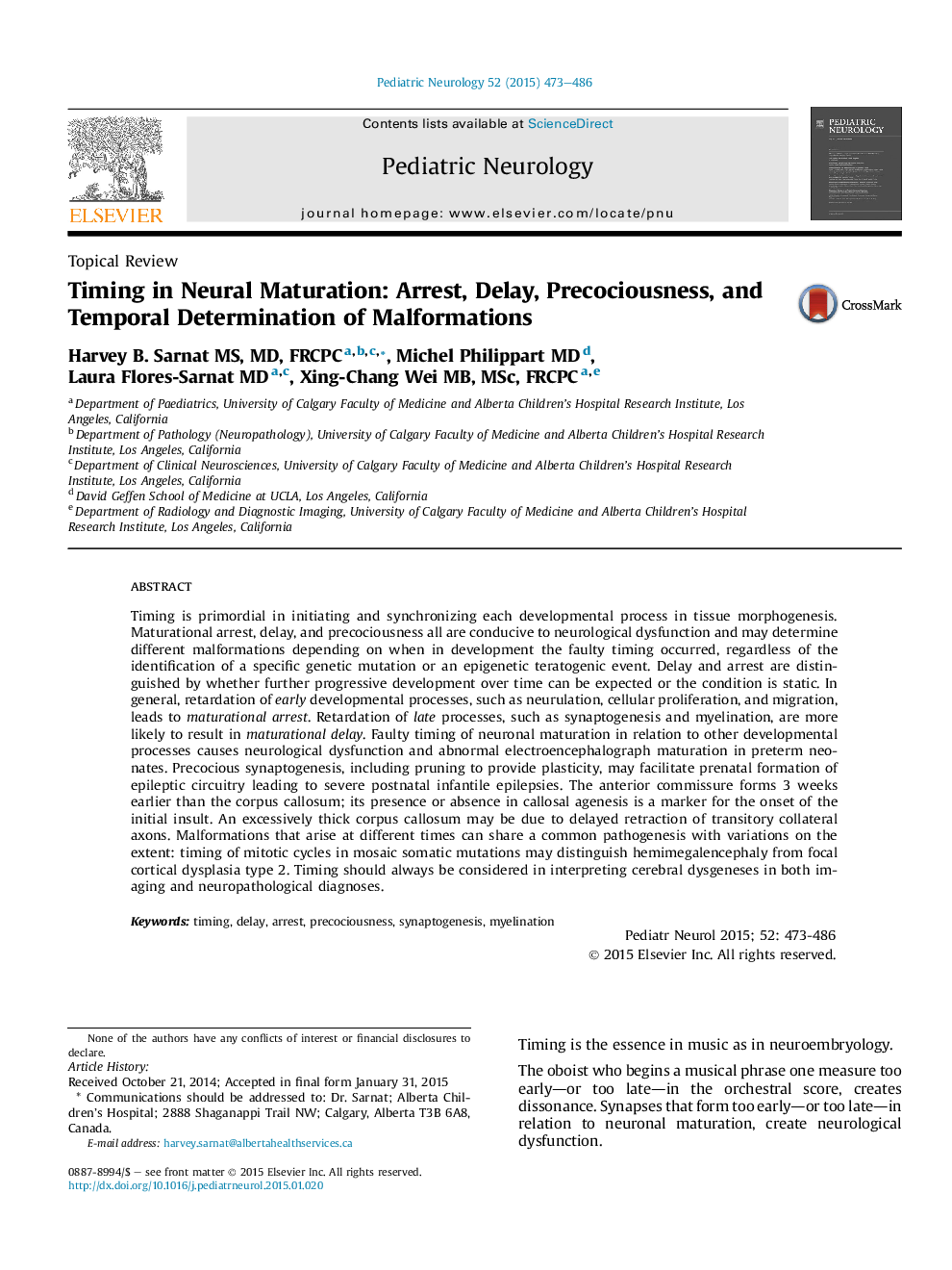| کد مقاله | کد نشریه | سال انتشار | مقاله انگلیسی | نسخه تمام متن |
|---|---|---|---|---|
| 3084533 | 1189772 | 2015 | 14 صفحه PDF | دانلود رایگان |
Timing is primordial in initiating and synchronizing each developmental process in tissue morphogenesis. Maturational arrest, delay, and precociousness all are conducive to neurological dysfunction and may determine different malformations depending on when in development the faulty timing occurred, regardless of the identification of a specific genetic mutation or an epigenetic teratogenic event. Delay and arrest are distinguished by whether further progressive development over time can be expected or the condition is static. In general, retardation of early developmental processes, such as neurulation, cellular proliferation, and migration, leads to maturational arrest. Retardation of late processes, such as synaptogenesis and myelination, are more likely to result in maturational delay. Faulty timing of neuronal maturation in relation to other developmental processes causes neurological dysfunction and abnormal electroencephalograph maturation in preterm neonates. Precocious synaptogenesis, including pruning to provide plasticity, may facilitate prenatal formation of epileptic circuitry leading to severe postnatal infantile epilepsies. The anterior commissure forms 3 weeks earlier than the corpus callosum; its presence or absence in callosal agenesis is a marker for the onset of the initial insult. An excessively thick corpus callosum may be due to delayed retraction of transitory collateral axons. Malformations that arise at different times can share a common pathogenesis with variations on the extent: timing of mitotic cycles in mosaic somatic mutations may distinguish hemimegalencephaly from focal cortical dysplasia type 2. Timing should always be considered in interpreting cerebral dysgeneses in both imaging and neuropathological diagnoses.
Journal: Pediatric Neurology - Volume 52, Issue 5, May 2015, Pages 473–486
